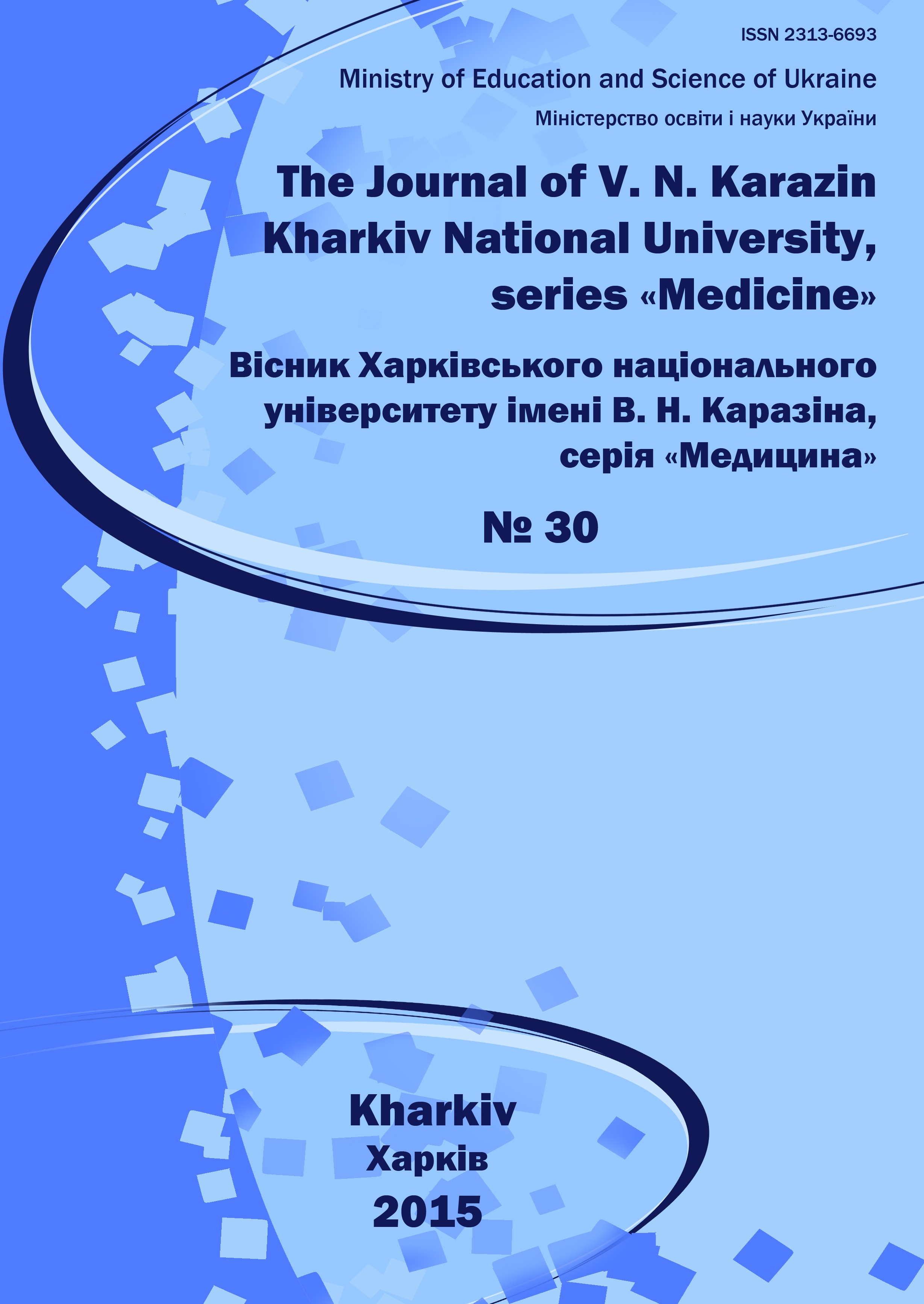ROLE OF GLYCAEMIA LEVEL IN THE DEVELOPMENT OF INTERSTITIAL COLLAGEN IN PATIENTS WITH CORONARY HEART DISEASE AND TYPE 2 DIABETES
Abstract
A role of blood glucose levels in the development of interstitial collagen has been studied in 84 patients (53 women and 31 men, average age 60 ± 2.4 years) with coronary heart disease (CHD). All patients were divided into twocomparable groups: a study group including patients with coronary heart disease andtype 2 diabetes mellitus (DM) and a control group consisting of patients with coronary heart disease without DM. All patients received standard medical therapy as recommended by the European Society of Cardiology. The level of blood glucose in both groups was assessed by the standard technique, a degree of interstitial collagen volume fraction (ICVF) was measured using the formula of J. Shirani et al. The data were processed by parametric and nonparametric statistical methods. It has been proved that hyperglycemia in type 2 diabetes contributes to the development of ICVF, the degree of which increases with the rise of blood glucose level. A high level ofICVF in patients with coronary heart disease and diabetes type 2 can be a predictor of myocardial dyssynchrony development and heart failure progression, therefore, a close monitoring and timely correction of changes of blood glucose levelsare recommended to prevent the complication development. ICVF evaluation should become a routine diagnostic method in all patients with type 2 diabetes.Downloads
References
Heidenreich P.A. Forecasting the Future of Cardiovascular Disease in the United States A Policy Statement From the American Heart Association / J. G. Trogdon, O. A. Khavjou // Circulation. - 2011. – № 123. – P. 933–944.
American Diabetes Association. Diagnosis and classification of diabetes mellitus / American Diabetes Association // Diabetes Care. – 2010. – № 33. – P. 62–69.
Miki T. Diabetic cardiomyopathy: pathophysiology and clinical features / T. Miki, S. Yuda, H. Kouzu, T. Miura // Heart Failure Reviews. – 2013. – № 18 (2). – P. 149–166.
Belenkov U. N. Lechenie cerdechnoy nedoststochnosty v XXI veke: dostyjenie, voprosy I uroki dokazatelnoy mediciny/ U. N. Belenkov, V. U. Mareev // Kardiologia. – 2013. – № 2. – P. 6–16.
Shabalin V. N. Diagnostic markers in the structures of human biological liquids / V. N. Shabalin, S. N. Shatokhina // Singapore med. J. – 2007. – Vol. 48. – P. 440–447.
Takawale A. Extracellular matrix communication and turnover in cardiac physiology and pathology / A. Takawale, S. S. Sakamuri, Z. Kassiri // Compr Physiol. – 2015. – № 5 (2). – P. 687–719.
Huxley R. Excess risk of fatal coronary heart disease associated with diabetes in men and women: meta-analysis of 37 prospective cohort studies / R. Huxley, F. Barzi // BMJ. – 2006. – Vol. 332, № 7533. – P. 73–78.
Shirani J. Usefulness of the Electrocar diagram and Echocar diagram in predictingtheamount of inter stitialmyocardialcjllagen in endomyocardial biopsy specimens of patients with chronic heart failure/ J. Shirani, R. Pick, Y. Quo // Am. J. Cardiol. – 1992. – № 69. – P. 1502.
McMurray J. J. ESC guidelines for the diagnosis and treatment of acute and chronic heart failure 2012: The Task Force for the Diagnosis and Treatment of Acute and Chronic Heart Failure 2012 of the European Society of Cardiology. Developed in collaboration with the Heart Failure Association (HFA) of the ESC / J. J. McMurray, S. Adamopoulos, S. D. Anker [et al.] // Eur J Heart Fail. – 2012. - № 14 (8). - P. 803–869.
Montalescot G. ESC guidelines on the management of stable coronary artery disease / G. Montalescot, U. Sechtem // Eur. Heart J. – 2013. – № 34 (38). – Р. 2949–3003.
Marcinkevich G. I. Elektro mechanicheskaya assinhronnost I geterogennost serdca pri serdechnoy nedostatochnosty / G. I. Marcinkevich, A. A. Sokolov // Serdechnaya nedostatochnost. – 2005. – Vol 6, № 3. – P. 120 – 123.
Calizio N. O. Which patients with congestive heart failure may benefit from biventricular pacing? / N. O. Calizio, R. Pesce, E. Valero [et al.] // Pacing Clin. Electrophysiol. - 2003. – Vol. 26, № 1–2. – P. 158–161.
The Journal of V. N. Karazin Kharkiv National University, series Medicine has following copyright terms:
- Authors retain copyright and grant the journal right of first publication with the work simultaneously licensed under a Creative Commons Attribution License that allows others to share the work with an acknowledgement of the work’s authorship and initial publication in this journal.
- Authors are able to enter into separate, additional contractual arrangements for the non-exclusive distribution of the journal’s published version of the work, with an acknowledgement of its initial publication in this journal.
- Authors are permitted and encouraged to post their work online prior to and during the submission process, as it can lead to productive exchanges, as well as earlier and greater citation of published work.




